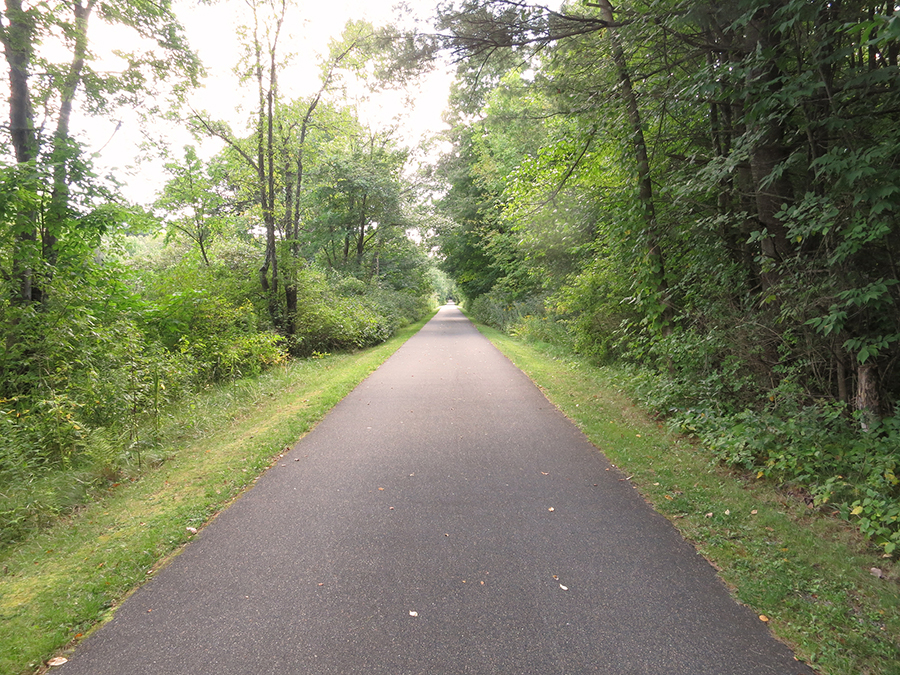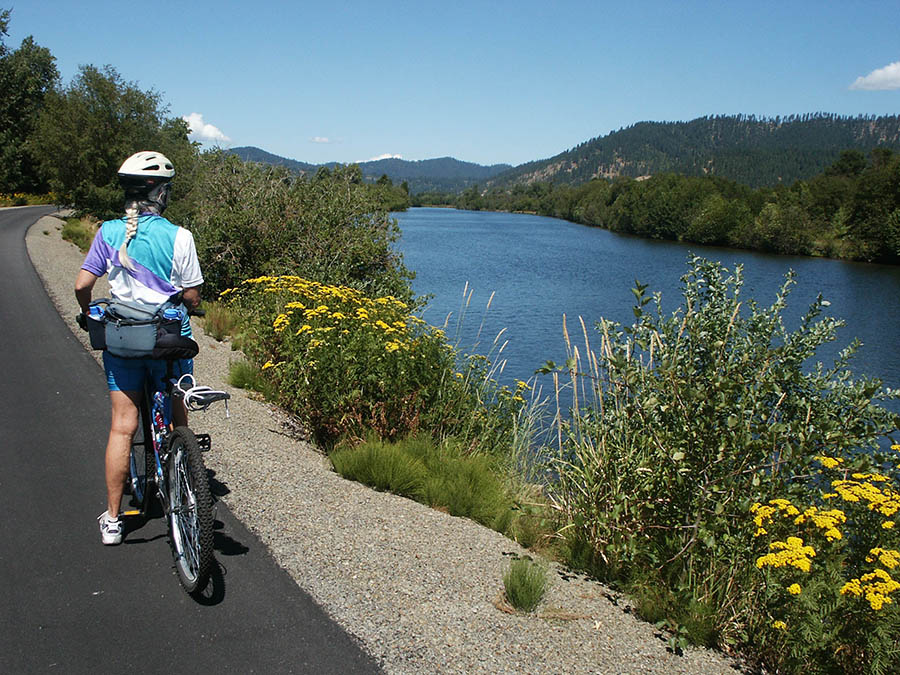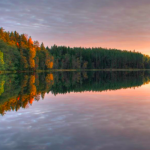Combine RV travel and rail-to-trail bike rides.

The Ashuwillticook Rail Trail in the Berkshire Mountains of Western Massachusetts.
We’ve heard it often enough. We need to exercise more and lose weight. Unfortunately I can’t offer you a magic pill that will remedy those two, but the Rails to Trails Conservancy thinks that you can have your cake and eat it too, so to speak, on their national network of scenic and urban trails. Hiking and biking can help you whittle away those excess pounds and have fun while doing it on the smooth converted rail beds once used by historic trains. So add a rails-to-trails excursion to your next RV trip!
RV Travel and rail-to-trail: Legacy of the Railroads
As the expanding U.S. rail system roared into the 1800s and early 1900s, the speed of the railroads brought the yields of far-flung farms and fields to the urban marketplace. At their height, the railroads counted over 250,000 miles of steel track connecting small towns with big cities in a massive rail transportation network. But as the 20th century matured, competition from cargo planes and eighteen-wheelers speeding across a spider web of interstate highways eventually short-circuited the Railroads’ easy money monopoly of shipping goods. Soon its rail network shrunk by more than half.
But the Rails to Trails Conservancy (RTC) stepped in as track was removed to lay down new bicycle and pedestrian-friendly surfaces on these abandoned and mostly level former rail corridors. Currently, 2,037 miles of open rail-trails cover a total of 22,831 miles in all fifty states. Additional projects underway will add 778 trails for 8,353 additional miles.
- California’s 26-mile-long Bizz Johnson Trail where you can ride from up high through shady forest to along the craggy Susan River Canyon, over trestle bridges, past historical sites, and to its signature chili cook-off.
- Idaho’s Trail of the Coeur d’Alenes, a majestic, distinct, dazzling, and wild trail is part of an 85-mile network through some of the most scenic stretches in the country. It crosses high trestles and passes under the Bitterroot Mountains through the 1.6-mile Taft Tunnel.
- The Great Allegheny Passage extends 150 miles through Pennsylvania and Maryland, across the Mason-Dixon Line, roaring rivers, mountain passes, epic tunnels, and trail towns, connecting to the Chesapeake & Ohio Canal National Historic Park towpath and ultimately Washington, D.C.
To Find the Rail Trail nearest you, go to Find A Trail and to learn more about the RTC visit the RTC website. Read more about RV biking here.








